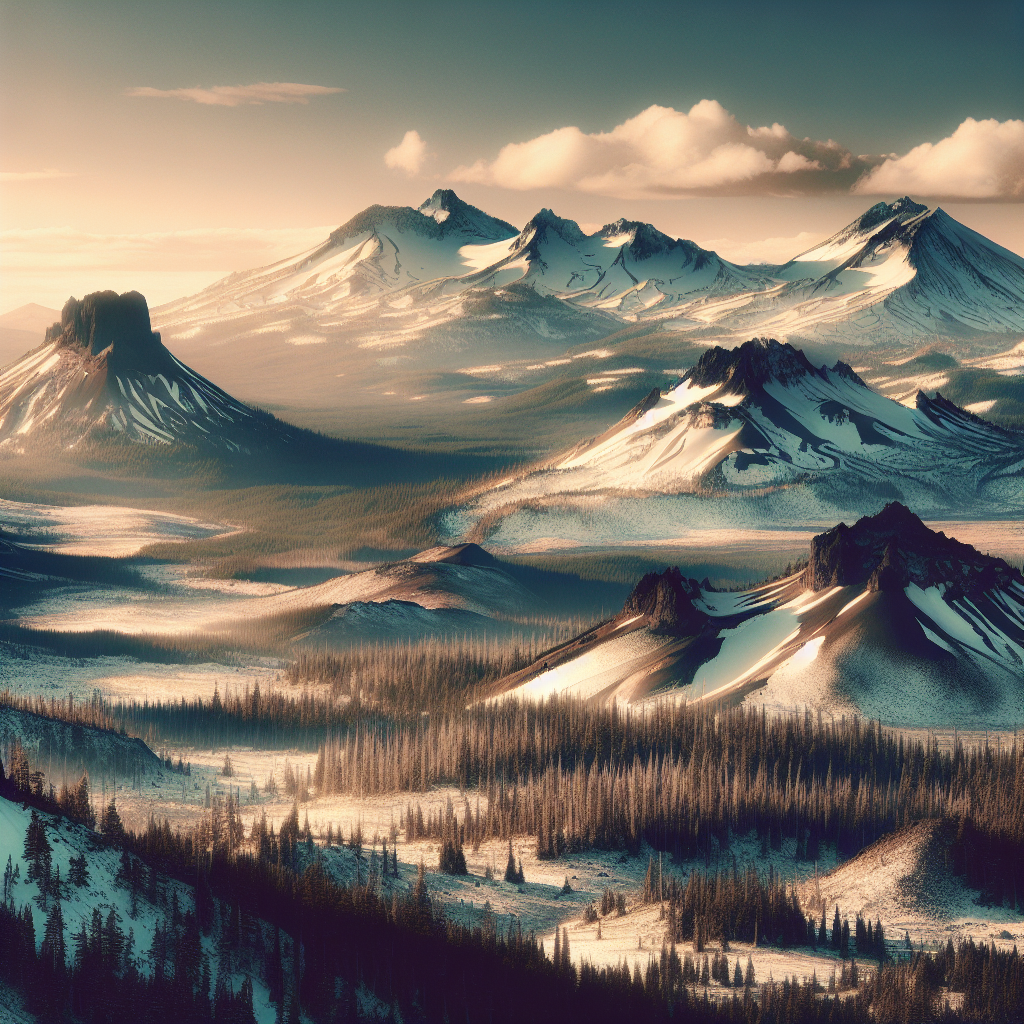Introduction to Oregon’s Volcanic Legacy
Few states can boast the raw, natural beauty of Oregon, a diverse landscape shaped by volcanic activity over millions of years. This panoramic guide will help you navigate the volcanic landmarks of the Cascade Range, taking you on a geographic journey brimming with local secrets and expert tips.
Embarking on a Geological Journey
Start this immersive adventure in southern Oregon where the Lava Beds National Monument located near Klamath Falls serves as a fascinating introduction. Walk through the lava tubes and visualize the magnitude of volcanic forces that created these formations. For an insider tip, pack a warm jacket for this underground exploration. Even during summer, the caves can be especially chilly.
Mount Mazama and Crater Lake

Heading north, the remnant of Mount Mazama awaits. This explosive stratovolcano collapsed about 7,700 years ago, leaving the deepest lake in the U.S. Crater Lake offers gorgeous views and an array of summertime hiking trails. Drive along the Rim Drive, a road that circles Crater Lake, and take in the mesmerizing sapphire blue of the lake and the stark, white winter landscapes if you’re there during the colder months.
The Three Sisters
The central Oregon range hosts the trio of stratovolcanoes known as the Three Sisters. South Sister, the youngest and tallest of the three, offers a dramatic peak for hiking enthusiasts. The summit reveals a snow-filled crater, a remnant from its last eruption 2,000 years ago. A hidden gem nearby is Proxy Falls, just a short drive from Sisters, Oregon. It’s a paradise for photographers and a welcome spot to cool down during those warm August days.
Mount Hood: Oregon’s Pride and Joy
Further north, you’ll encounter Mount Hood, Oregon’s highest peak, and a popular playground for locals and tourists alike. While its ski slopes and scenic trails draw crowds and national attention, not everyone knows about the stunning Lost Lake, tucked away in the Mount Hood National Forest. It lives up to its name, providing a secluded spot enveloped by the forest’s peaceful quiet.
Mount St. Helens: An Epic Tale of Destruction and Rebirth
Despite lying just across the border in Washington, Mount St. Helens is an integral part of Oregon’s volcanic story. Its violent eruption in 1980 profoundly affected the surrounding landscape and Oregonians themselves. The Johnston Ridge Observatory enhances your understanding of this event, while Spirit Lake provides a poignant testament to nature’s resilience.
Keep in Mind
Navigating these natural wonders requires care and respect for the environment. The weather along the Cascade Range can be capricious, so always check forecasts before heading out and dress in layers. And remember, the volcanic peaks of Oregon often carry deep snow into late spring, making certain trails inaccessible until summer.
Be Our Guest
Oregon’s volcanic history is rich and exciting, and experiencing it firsthand is something to cherish. So pack your hiking boots, remember your sense of wonder, and get ready to fall in love with the Pacific Northwest’s unique brand of natural beauty. Think of this advice as a roadmap from a fellow Oregon enthusiast, showing you the places, we locals treasure. Happy exploring, and don’t forget to enjoy every moment of Oregon’s spectacular volcanic legacy!
